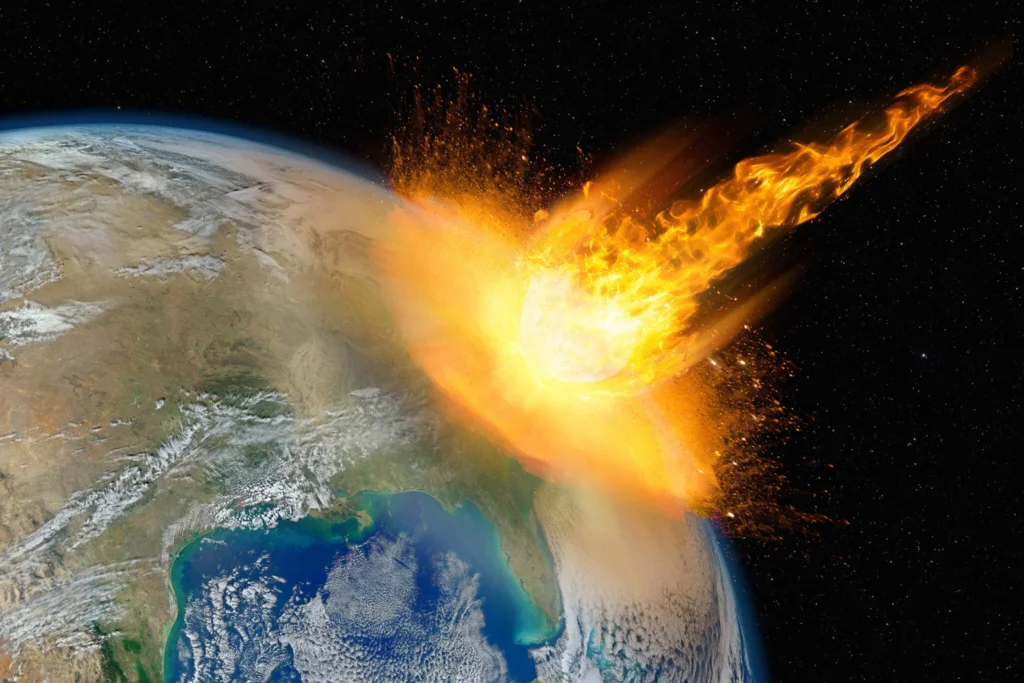Astronomical Geological Anomaly
"[While the chemical composition of the 656-gram rock suggests a terrestrial origin, the presence of a] fusion crust [caused by a fiery trip through the atmosphere points to it having arrived from space].""[Certain isotopes in the meteorite] point to a very short [10,000-year] but significant exposure to galactic cosmic rays, and preclude that NWA 13188 is a man-made 'fake' meteorite."Geophysicist Jerome Gattacceca, French National Centre for Scientific Research
 |
A meteorite discovered a few years ago in the Sahara desert has been revealed by scientists studying it that the space rock startlingly appears to have originated on Earth itself. Their careful studies have led to the conclusion that this is a boomerang meteorite. It became such when a small asteroid hit Earth a few thousand years ago, disturbing terrestrial rocks with sufficient physical force to propel them into space. One of these pieces of rock, now catalogued and named Northwest Africa 13188 (NWA13188) has been orbiting Earth for millennia until it fell back to the Sahara.
And while this explanation, informed as it is geologically and astronomically, is intuitively speculative in nature, the fact is this unusual specimen was discovered by a meteorite hunter in 2018 and subsequently sold to a French collector, Albert Jambon. "I purchased this one just because it was odd. Nobody knows what this stone is really worth", he explained.
The hypothesis of the mysterious 'boomerang' meteorite was formally presented at an international geochemistry conference that took place in Lyon, France, by geophysicist Jerome Gattacceca. His and his colleagues' hypothesis has been called into question by other geologists who find it concerning that an asteroid sufficiently large to knock rocks into space has left no trace of its impact with Earth. There appear to be no known craters large enough and young enough in space-time to qualify for identification as to the source of the mystery.
Dr. Gattacceca feels that a huge volcanic eruption might also have been the source of sufficient power to violently blast a rock into orbit, and so he plans to conduct more tests on NWA 13188 to accurately assess its age and devote a more investigative approach to realize a reliable amount of time it could have spent circuiting in space. Should it be proven that this is indeed a boomerang meteorite it would qualify as the first of its kind.
There was another confirmed sample of a meteorite from Earth, discovered in 1971 when the crew of Apollo 14 brought back a rock from the moon containing a small fragment of Earth which had been knocked awry by a collision with an asteroid four billion years ago which landed on the moon. It only took a few million additional years to be uncovered by another impact 26 million years ago.
 |
| The fall of an asteroid to Earth in the artist’s image. Source: Dzika Mowka/iStock/NASA |
Labels: "Boomerang Meteorite" Originating on Earth, Asteroids, Astronomy, Earth, Meteorite Impact

0 Comments:
Post a Comment
<< Home